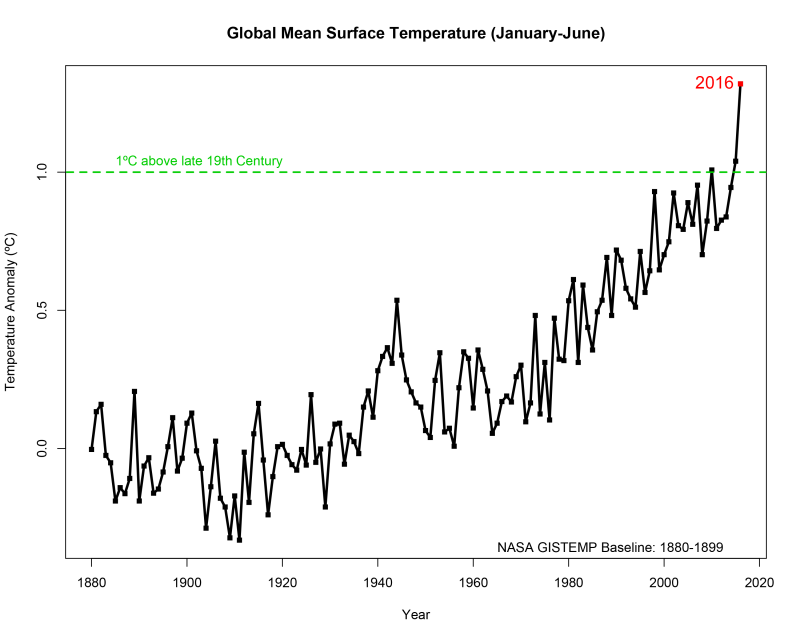According to a report from NASA on Monday (July 19, 2016) two key indicators of climate change – global surface temperatures and Arctic sea ice extent – have broken records in the first half of 2016.
Each of the first six months of 2016 set a record as the warmest respective month globally in the modern temperature record, which dates to 1880, according to scientists at NASA’s Goddard Institute for Space Studies (GISS) in New York. Also, the six-month period as a whole – from January to June – was the warmest half-year on record. The average temperature for the 2016’s first half was 1.3 degrees Celsius (2.4 degrees F.) warmer than the late nineteenth century.
Another record that was broken in 2016’s first half is the Arctic sea ice extent – the measurement of the area of the Arctic Ocean where there is at least some sea ice. Five of the first six months of 2016 set records for the smallest respective monthly Arctic sea ice extent since satellites started keeping track in 1979, according to NASA analyses. The one exception, March, recorded the second smallest extent for that month.
According to the NASA statement:
While these two key climate indicators have broken records in 2016, NASA scientists said it is more significant that global temperature and Arctic sea ice are continuing their decades-long trends of change. Both trends are ultimately driven by rising concentrations of heat-trapping carbon dioxide and other greenhouse gases in the atmosphere.

The extent of Arctic sea ice at the peak of the summer melt season now covers about 40 percent less area than it did in the late 1970s and early 1980s, says NASA. Arctic sea ice extent in September, the seasonal low point in the annual cycle, has been declining at a rate of 13.4 percent per decade.

Walt Meier is a sea ice scientist at NASA Goddard. He said that he global trend in rising temperatures is outpaced by the regional warming in the Arctic. Meier said:
It has been a record year so far for global temperatures, but the record high temperatures in the Arctic over the past six months have been even more extreme. This warmth as well as unusual weather patterns have led to the record low sea ice extents so far this year.
Enjoying EarthSky? Sign up for our free daily newsletter today!
Bottom line: Two key indicators of climate change – global surface temperatures and Arctic sea ice extent – have broken numerous records through the first half of 2016, according to NASA.











